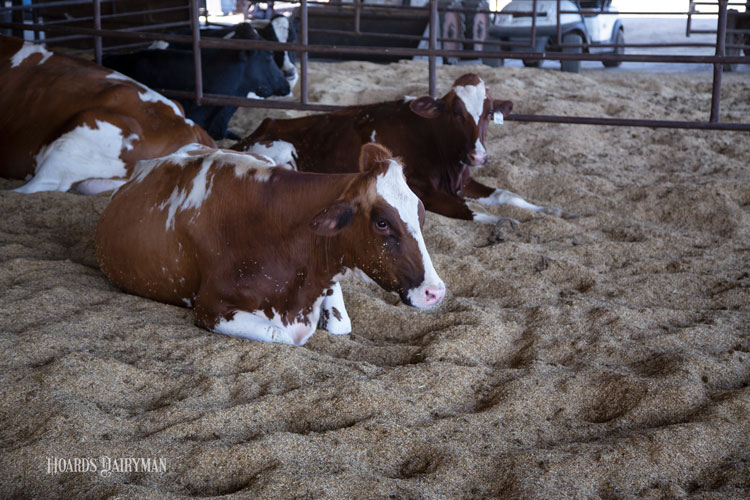
The arrival of fall brings many tasks to the farm. For dairies using a compost bedded pack barn, this time of the year also can be a good time to clean out the pack.
Compost bedded pack barns provide comfortable housing for cows, but they must be properly maintained. According to University of Kentucky’s Tanya France, Donna Amaral-Phillips, and Joao Costa in the most recent issue of Kentucky Dairy Notes, compost bedding should be cleaned out once a year.
When cleaning out a barn, producers should leave 6 to 12 inches of old bedding material on the floor to help start microbial activity in the new pack. Removed bedding can be used as a fertilizer for crops. Another option is to manage it to turn into a compost product that can then be sold.
To start-up the pack, apply 1 foot of bedding, which could be sawdust or fine, dry wood shavings. Enough bedding should be added so the stirring equipment is not able to touch the barn floor.
According to France, Amaral-Phillips, and Costa, timing is vitally important when starting a new compost bedded pack. They said that it should be done at a time when the next four to six to weeks of weather are expected to have highs above 50°F. This gives the bedding enough time to actively begin composting and generating heat.
Ideally, the rate of heat production should be at its peak prior to temperatures falling below freezing. Going into the winter without adequate heat production during the composting process can lead to challenges in managing and maintaining proper bedding characteristics through those cold months.
New bedding should be added as needed to help sustain a dry surface for cows to lie on. Any moisture level above 60 percent requires additional bedding. Frequency can vary, but the authors’ recommendation is to add 4 to 8 inches of bedding every one to six weeks, depending on humidity levels and stocking density.
Stirring twice a day is an absolute necessity to create a soft, dry surface. This should be done at a depth around 12 inches. One practical way to schedule this task is to stir the pack every time the cows are gone for milking.
The pack temperature should be measured 6 to 12 inches below the surface using a long thermometer. A temperature between 110 and 150°F to will allow for effective composting. Monitoring temperature is another important step in maintaining a compost bedded pack barn that provides a comfortable environment for cows while supporting good hygiene and udder health.








